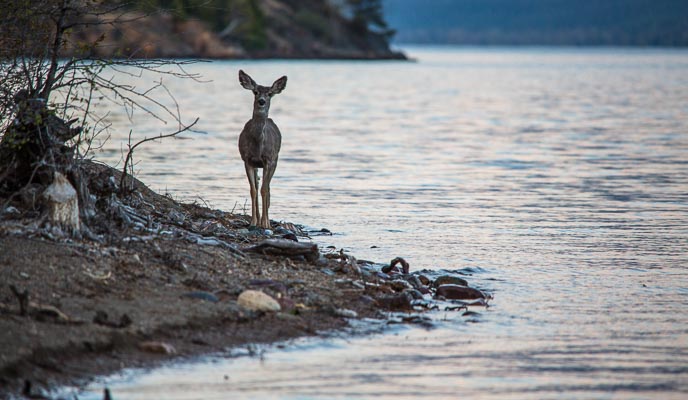Last updated: December 29, 2020
Lesson Plan
Is There Room for Everybody?

- Grade Level:
- Lower Elementary: Pre-Kindergarten through Second Grade
- Subject:
- Science
- Lesson Duration:
- 60 Minutes
- Additional Standards:
- NGSS 2-LS4-1 Make observations of plants and animals to compare the diversity of life in different habitats.
Essential Question
Why is space important in a habitat?
Objective
Students will develop an awareness of carrying capacity (the number of species that can survive in an area over time) and its relationship to habitat.
Background
Animals need certain things to survive: food, water, shelter and space in the proper arrangement. As humans develop land, there is usually a decrease in the animals’ habitat. A large predator such as a cougar needs about 70 pounds of meat per week to remain alive and healthy. A mother needs about twice that much to keep both her and her cubs healthy. Cougars stalk and chase about 10 animals for every one they catch.
Preparation
- Labeled cards: (animal and pounds of meat)
- Deer – 50# (10 cards)
- Beaver – 20# (10 cards)
- Raccoon – 4# (15 cards)
- Rabbit – 3# (20 cards)
- Squirrels – 1# (30 cards)
- Paper and pencils
Procedure
- Depending on the number of students in your class, you may wish to modify the numbers of the cards. The idea is to have enough so that some of the cougars survive, but not all.
- Distribute the cards face down in an area outside or in a gymnasium.
- Have the “cougars” establish their “lair” (a place where they live) in the playing area.
- Starting from their lair, have them gather one card at a time and bring it back to the lair. Continue until the cards are gone.
- Have each student total their pounds of meat. Those with their 70# weekly requirement have survived. The number of cougars still alive represents the carrying capacity of that area for cougars.
- Play again with variations: blind cougars (blindfolds), old cougars who have broken their killing teeth (can’t eat deer), mothers with cubs (need 140#), etc.
- After carrying capacity is established, remove some cards because humans have moved in and reduced habitat. Play again and discuss the effects of habitat loss on the carrying capacity.
Vocabulary
- Habitat-the natural home or environment where an animal lives.
- Carrying Capacity-the number of people, other living organisms, or crops that a region can support without environmental degradation.
Assessment Materials
How Can We Help?Ask students to write ways in which humans can help conserve habitat for an animal of their choice.
Related Lessons or Education Materials
This is the post-visit lesson for our Exploring Habitats field trip. Visit our scheduling and guidelines page to learn how to register for a ranger-led field trip.
